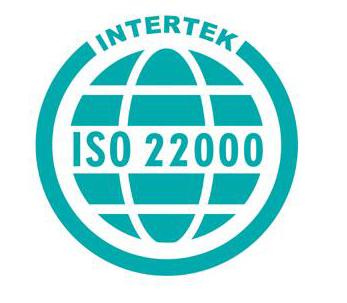
ISO22000
Introduction: ISO22000 refers to 2005 Food Safety Management SystemISO22000: 2005 food safety management system. Is the basis for organizational certification and registration. Is the international standard, the application requires internal audit, second party audit, third party audit.
benefit
(1) can be organized with the trading partners, targeted communication;
(2) to optimize the use of resources within the organization and in the food chain;
(3) to improve the management of document resources;
(4) to strengthen the planning, reduce the process after the test;
(5) more effective and dynamic food safety risk control;
(6) all control measures will be carried out risk analysis;
(7) the systematic management of the necessary programs;
(8) Due to the end result, the standard has a wide range of applications;
(9) can be used as a valid basis for decision-making;
(10) to fully improve the degree of diligence;
(11) focus on the control of the necessary problems;
(12) Save resources by reducing redundant system audits.
Object hazard identification is one of the processes that we often find in the course of auditing according to ISO 22000. For the object of hazard identification, many enterprises still stay in the requirements of HACCP system, that is, from the beginning of raw material acceptance, to product delivery End. ISO 22000 standard 7.4.2.1 requires the enterprise to "identify and record all reasonably anticipated food safety hazards associated with the product category, process category and actual production facility."
Therefore, enterprises in the identification of hazards, first based on the scope of the system to identify the identification of product categories, such as canned vegetables, rabbit rabbit package [are rice products], fish balls [are frozen food] and so on. Then, on the basis of the identified different product categories, identify the process of product realization, including the main process of receipt of raw materials to the product delivery, including product transportation [outsourcing process], equipment maintenance [auxiliary process], equipment cleaning [Cleaning and disinfection process] and other production assistance process. And then identify the food safety hazards associated with the production facility, such as the clean plant of the beverage manufacturer, to identify and identify food safety hazards that may be caused by inadequate production facilities.
In the case of hazard identification, the effect of the prerequisite program can not be considered, since the purpose of the hazard identification is to identify "all food safety hazards that may reasonably be expected to occur".
Promote meaning
In the ongoing situation of food safety issues, based on the establishment of this standard food safety management system of the organization, through its effectiveness of self-declaration and assessment results from the organization to the community to confirm its ability to control food safety hazards, Stable provision of food products in line with food safety requirements to meet customer food safety requirements; the organization of its food safety requirements and their business objectives organically unified.
Food safety requirements are the first; it is not only a direct threat to consumers; but also directly or indirectly affect the food production, transportation and sales organizations or other related organizations, goodwill; even affect the food authorities or government's public trust degree. Therefore, the promotion of this standard is of great significance and far-reaching significance.